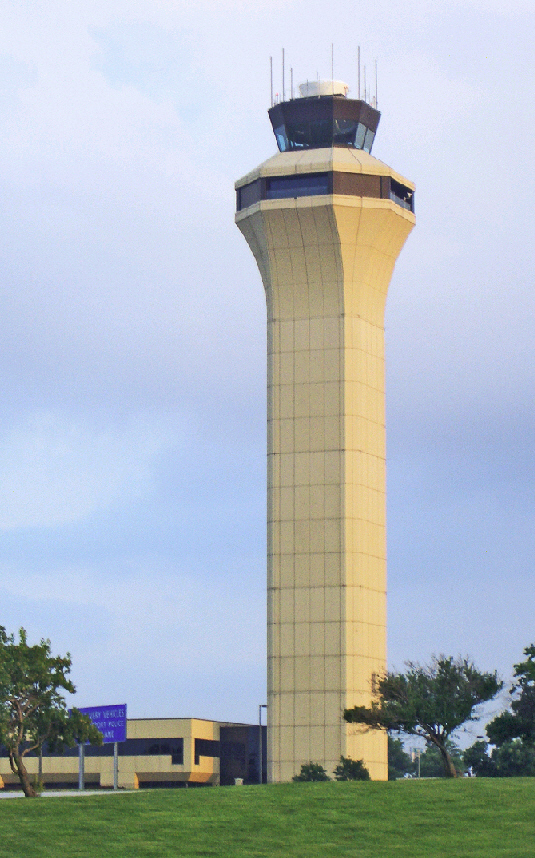I know it has been a while since I posted something, but there is trouble, and it is related to flying. This will be a political post, if you don't like it, I understand. You won't have to read it. It seems this subject comes up every few years, but common sense prevails, and the private ATC and user fee rhetoric goes away.
Flying aircraft costs money. You have to pay for the aircraft, and all the wear on it, the fuel and other consumables. Then there is building airports, hangars and other real-estate items. Once you are in the air, there is air traffic control (there is air traffic control at some airports, but that is a minority). There are regulators, inspectors, people who change light bulbs and other maintainers of things.
Some how all the stuff has to be paid for. Today, most of the revenue to run the people, regulations and real-estate related expenses is covered by fuel taxes. There are other taxes of course, real-estate and sales and use tax that cover local expenses as opposed to the fuel taxes that take care of the federal expenses. The system today is running pretty good, when congress doesn't raid the aviation funds to pay for other items (I know they usually leave an IOU, but not always).
The airlines and congress are trying to change all this. Well, or make it more complicated. There is a bill introduced by Rep. Bill Schuster (from Pa.) called Aviation Innovation, Reform, and Reauthorization (AIRR) Act. It has several parts, including reauthorizing the FAA, adding private rooms for nursing mothers and requiring baggage fee refunds for bags delayed over 24 hours. The bill also wants to regulate drones (UAV's really), and outlaw voice calls on flights. The biggest thing the bill wants to change is to take air traffic operations (ATO) out of the FAA's hands and put it into another groups domain.
This new ATC (ATO) organization would be a not for profit corporation who's sole purpose would be to handle the air traffic operations. All the current air traffic controllers would be part of this new corporation. Managers, janitors, planners, office assistants, controllers, supervisors all would be part of this corporation. All the equipment, and buildings would be a part of this new organization. The hope is, that the users would pay for this service.
The argument is that "modernization" isn't happening fast enough. Moving all the air traffic operations out of the FAA, they argue, will streamline the modernization. The specifics of this new modernization are not covered or explained. There is vague future kind of hope. The sponsors of the bill offer some of the current "NextGen" initiatives haven't happened quickly enough.
The sponsors of the bill say the FAA will focus on what it does best providing safety. No question, the FAA does provide guidance allowing the US to be one of the safest countries to fly in. Between testing, regulations and regular information bulletins (SAIB) the pilots, owners and operators are well informed (if they want to be).
The sponsors of the bill also want to convince us that the USA is the only large industrialize country that doesn't have a separate air traffic organization. The fact is, the US airspace and operations are far different than any other country. The USA allows much more freedom for most pilots. Pilots many times don't have to talk to anyone in air traffic control for their whole flight. A small airport will typically not have a control tower. Pilots coordinate their own separation at these airports using the radio and a "party line" frequency (CTAF). Once in the air, most of the US airspace does not require communicating with air traffic control. Once in the area of an airport with a control tower, then communications must be established.
Canada has more open airspace than the US. Canada has less populated areas, so it is common to not have need to talk to airtraffic control for hours. Nav Canada is the not for profit corporation Canada set up to run their ATO. They have a simple book explaining their fees. For a Cessna 182 based out of Moose Jaw Municipal Airport (CJS4) that may fly in the area, never landing at Ottawa, Edmonton or Alberta airports the fee may be as little as $68 per year. If the same aircraft were a Falcon 50, the fees would be significantly higher starting with a $227 base fee + miles and services used.
While Nav Canada seems to be a model to follow, in less than 15 years from it's founding (Nov 1, 1996-Jan 12, 2009) the corporation became illiquid. The hope is that the note that were issued to make the corporation solvent will mature in 2017, and will be fully paid back. The funding for the interest on those note came from the users of the service. So while the corporation is non-profit, it still needs to break even. Fees the users pay must match the needs of the corporation. Canada also charges a tax on Av Gas, but that goes to the federal government, not to Nav Canada.
This separate corporation will need to build infrastructure. There are buildings that need repair, computers that need upgrades, RADARs that need maintenance, etc. The fees need to cover current costs, as well as plans for the future. If an airport needs to add new equipment to a control tower, there must be money available to cover that. The fees need to be based on projected operations, for the following year. (it is tough to collect proactive fee increases). The modernization will cost money, that the non-profit company has to spend.
Many pilots are challenged to find the money needed to go flying as it is. While most people see all the corporate jets on the ramp at their local airport, in the hangars and tie downs are all the affordable aircraft. Owners of these aircraft skip lunches, drive crummy cars, and do what they need to to be able go fly once a week in their plane. When the local people can't fly, the fee model gets skewed, and the big guys pay more fees. The airlines don't pay these fees out of the kindness of their heart, they pay them with higher ticket prices.
There are also two edges to this sword. If traffic increases in an area, there may not be staff to cover all the services needed. The budget was set, and it may not allow additional staffing for temporary situations. Likewise, pilots may avoid asking for services when in an area if they believe they can get by without it due to costs, even though the weather is deteriorating. Either way safety is not at the top of the priority list.
The agility will be compromised by having a separate ATO corporation from the safety group. If the ATO wants to make a change that may affect safety, there will need to be meetings and specific plans nailed down and approved by committees of both corporations. Committees are not always the most functional groups, so that will add time and complexity.
Additional bureaucracies will need to be added. There will need to be safety audits of the ATO corporation by the FAA. This functionality will expand as needed until both groups are unable to operate well. There will also be fee collectors, and auditors for that functionality.
While it may seem congress is doing this on their own, they aren't. The Airlines For America (A4A) is the biggest proponent of this action. The A4A is the big lobbying group for the airlines in the US. Even within the ranks of the organization, not everyone agrees with privatizing ATC. Delta airlines quit the A4A because of this action.
Over all, the plan for a private ATC system will end up costing the users (anyone who flies, passenger, pilot or cargo) more money. It may seem like a simple answer, but in the end, the corporation will grow, the FAA won't shrink, congress won't cut fuel taxes and the new corporation will collect ever increasing fees.
Show me where I am wrong!

